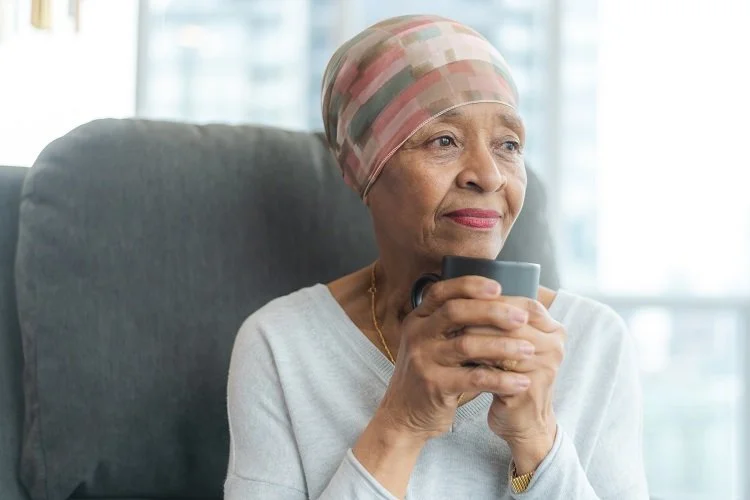
Cancer treatment can be life-saving, yet it often brings difficult side effects, including pain. Understanding the different types of pain that can arise from these treatments empowers patients, helps them communicate their needs, and guides them toward relief.
In this post, we’ll explore pain as a common side effect of cancer treatments, discuss its impact on quality of life, and explain why pain management is essential to the overall treatment plan. By shedding light on this subject, we aim to provide patients and their loved ones with the tools they need to seek effective care.
The Connection Between Cancer Treatments and Pain
Cancer treatments are powerful tools; however, they often come with intense side effects, including pain. Treatments like surgery, chemotherapy, and radiation can cause pain or even intensify existing pain. Pain related to cancer treatment varies greatly among patients, as each case is unique.
Some patients may experience pain that is mild and temporary, while others suffer from chronic pain that disrupts daily activities. Importantly, the type of pain often depends on the specific treatment received and the area of the body being treated.
In addition to physical pain, patients may experience emotional or psychological pain tied to their cancer treatment. Knowing what to expect and how to seek help can improve a patient’s experience and quality of life.
Let’s look at the main types of pain that are commonly associated with cancer treatment side effects.
Types of Pain from Cancer Treatment Side Effects
Acute Pain
Acute pain often starts suddenly and is usually sharp and intense. It may last briefly or persist, depending on how the body responds to treatment. For instance, patients may experience acute pain right after surgery, radiation, or certain chemotherapy drugs. For example, chemotherapy injections or biopsies can cause immediate, intense pain.
While acute pain typically decreases as the body heals, managing it during recovery is essential. Addressing acute pain can prevent complications, improve mobility, and reduce the risk of it becoming chronic. Moreover, effective management helps patients maintain a more positive outlook, which is crucial during cancer treatment.
Chronic Pain
Chronic pain from cancer treatments can linger for months or even years. As a result, it can affect patients’ ability to work, sleep, socialize, and exercise, impacting both physical and mental health. For some, this pain may stem from scar tissue or nerve damage. Others may develop chronic pain due to ongoing treatments or recurrent cancer.
Examples of chronic pain include persistent post-surgical pain, pain from scar tissue, and nerve pain. Chronic pain often requires a multi-faceted approach that includes medications, physical therapy, counseling, and possibly interventional pain management techniques like nerve blocks.
Neuropathic Pain
Neuropathic pain occurs when cancer treatments damage the nerves. This type of pain can arise from chemotherapy, radiation, or surgery. Neuropathic pain feels like burning, tingling, or shooting sensations, and many patients describe it as “pins and needles” or a “shock.”
Nerve pain may develop soon after treatment, or it may appear months or even years later. Because neuropathic pain often doesn’t respond well to common pain medications, it can be particularly challenging to treat. For this reason, specialized medications, physical therapy, nerve blocks, or spinal cord stimulation may be necessary to manage it effectively.
Cancer Treatments and Their Side Effects on Pain
Now, let’s examine how different types of cancer treatments can contribute to pain. Understanding the mechanisms of pain from each treatment can guide patients and caregivers in seeking targeted relief.
Surgery and Pain
Surgery is one of the most common treatments for cancer and is often necessary to remove tumors or affected organs. Surgical pain is a natural response as tissues heal, and while pain is expected, it can range from mild to severe depending on the procedure’s extent.
Types of Surgical Pain:
- Post-Surgical Pain: Patients often feel pain around the surgical site that may last for days or weeks.
- Phantom Pain: Those who undergo amputations may feel pain in the missing limb, known as phantom limb pain. Although this type of pain is not fully understood, it can be intense and challenging to manage.
To manage post-surgical pain, doctors may prescribe medications, suggest physical therapy, or use nerve blocks. Effective pain control after surgery not only helps patients heal faster but also keeps them mobile and optimistic about their recovery.
Chemotherapy and Pain
Chemotherapy drugs are designed to kill fast-growing cancer cells, yet they often affect healthy cells as well, leading to a range of side effects, including pain. Chemotherapy-related pain can affect various areas of the body.
Common Types of Chemotherapy-Related Pain:
- Peripheral Neuropathy: Certain chemotherapy drugs can damage nerves, leading to pain, numbness, and tingling in the hands and feet. Known as peripheral neuropathy, this pain can be long-lasting and may continue even after chemotherapy has ended.
- Bone Pain: Some chemotherapy drugs can cause bone pain, especially in large bones like the spine and legs. This may result from how the drugs affect the bone marrow, which produces blood cells.
Managing chemotherapy-related pain may include prescription medications, physical therapy, and in some cases, nerve blocks or spinal cord stimulation.

Radiation Therapy and Pain
Radiation therapy uses high-energy rays to kill cancer cells. It is highly effective; however, it can cause pain both during and after treatment. This pain can be particularly severe for patients receiving radiation in sensitive areas like the head, neck, or chest.
Types of Radiation-Related Pain:
- Burning Sensation: Radiation can cause a burning feeling on the skin, similar to a sunburn. Over time, this can lead to sores, blisters, and tissue damage.
- Fibrosis and Scarring: Radiation can lead to scarring, known as fibrosis, which may cause stiffness and pain in tissues, especially in areas like the neck or chest.
- Nerve Damage: Radiation can also damage nerves, leading to neuropathic pain that may persist long after treatment has ended.
Pain management for radiation therapy may include topical treatments for skin burns, medications to reduce inflammation, and nerve blocks for neuropathic pain.
Radiation and Risk of Vertebral Compression Fractures
In addition to the immediate side effects of radiation, such as burning pain and nerve damage, patients who receive radiation near the spine may face an increased risk of vertebral compression fractures. Radiation can weaken the bones over time, especially in areas like the spine, by reducing bone density. This risk can be higher for patients already dealing with osteoporosis or other bone-density issues.
Symptoms of Compression Fractures: These fractures often cause sudden, sharp pain in the back that worsens with movement. In some cases, the pain may radiate to other areas or become chronic if left untreated. Compression fractures can also impact posture, leading to height loss or a stooped appearance.
Managing Compression Fractures: Treatments such as bracing, physical therapy, and pain management can relieve symptoms and stabilize the spine. In cases of severe pain or significant structural compromise, procedures like kyphoplasty or vertebroplasty can provide effective relief by stabilizing the affected vertebra.
Patients should discuss bone health with their care team, especially if they are undergoing or have undergone radiation near the spine. Preventive strategies, such as calcium and vitamin D supplementation and lifestyle modifications, may help reduce the risk of fractures.
Immunotherapy and Targeted Therapy Pain
Immunotherapy and targeted therapy are newer approaches in cancer treatment, designed to attack cancer cells more precisely. However, they can still lead to pain and discomfort, often in joints and muscles. The side effects vary depending on the specific type of immunotherapy or targeted therapy used.
Types of Pain from Immunotherapy and Targeted Therapies:
- Joint and Muscle Pain: Many patients experience joint pain, stiffness, or muscle pain due to inflammation.
- Nerve Pain: Certain targeted therapies can cause nerve pain, similar to the effects of chemotherapy.
Since these therapies are newer, managing pain from them may require innovative approaches, including physical therapy, anti-inflammatory medications, and nerve blocks.
Impact of Pain from Cancer Treatment Side Effects on Quality of Life
Pain from cancer treatment doesn’t only affect the body; it impacts a patient’s entire well-being. When pain is uncontrolled, it can lead to various secondary challenges, including:
- Decreased Physical Activity: Pain can limit a patient’s ability to move and perform daily tasks. Reduced activity often leads to loss of strength and mobility, making it harder to recover.
- Poor Sleep Quality: Pain can disrupt sleep, leading to fatigue and a compromised immune system, both of which hinder recovery.
- Mental Health Strain: Chronic pain can lead to anxiety and depression, especially if the pain feels constant or untreatable. It can be hard to stay positive when in pain, which is why effective pain management is essential.
By managing pain effectively, patients can experience a higher quality of life even during cancer treatments. With a comprehensive plan, patients can maintain a higher level of activity, improve sleep, and enjoy a more positive outlook.
Effective Pain Management Options for Cancer Treatment Side Effects
Pain management for cancer treatment side effects requires a personalized, multi-pronged approach. Here are some of the most effective methods available today:
Medications
Medications remain a foundation for pain management. Options include:
- Over-the-counter medications: These, like ibuprofen and acetaminophen, work well for mild pain.
- Prescription pain relievers: In some cases, doctors may prescribe opioids for short-term use, but long-term use is often limited due to potential side effects and risks.
- Neuropathic pain medications: Drugs like duloxetine, gabapentin, and pregabalin are often used for nerve pain, helping to reduce pain signals.
Physical Therapy
Physical therapy is key for managing pain and rebuilding strength. Therapists teach exercises to improve flexibility, reduce pain, and help patients regain mobility after treatment.
Interventional Pain Management
For severe or chronic pain, interventional treatments offer targeted relief. Some options include:
- Nerve Blocks: Injections that block pain signals from reaching the brain.
- Radiofrequency and Tumor Ablation: Techniques using heat to destroy cancer and disrupt pain-causing nerves.
- Spinal Cord Stimulation: Devices that send electrical impulses to the spine to block pain signals.
Psychological Support and Counseling
Pain affects mental health, so addressing emotional well-being is essential. Therapy, support groups, and counseling can be very effective in helping patients cope with the stress of chronic pain.
Looking Ahead: Diving Deeper into Pain from Cancer Treatments
Pain related to cancer treatment can be complex—but with the right approach, relief is possible.
In the coming posts, we’ll explore different types of pain caused by various cancer treatments. From nerve pain to joint and muscle pain, we’ll break down the challenges and share effective strategies to manage each one.
Our goal is to help you improve your quality of life, so you can move forward with greater confidence and comfort. At Red Butte Pain Solutions, we’re committed to supporting you every step of the way with expert care and personalized pain management plans.
📞 Call us today at 602-633-4334
🔗 Schedule now to get started on your path to relief.
We proudly care for patients from Chandler, Ahwatukee, Laveen, Sun Lakes, Casa Grande, Maricopa, Gilbert, Mesa, Tempe, and South Phoenix.
